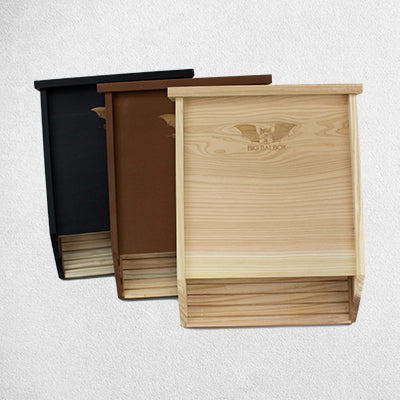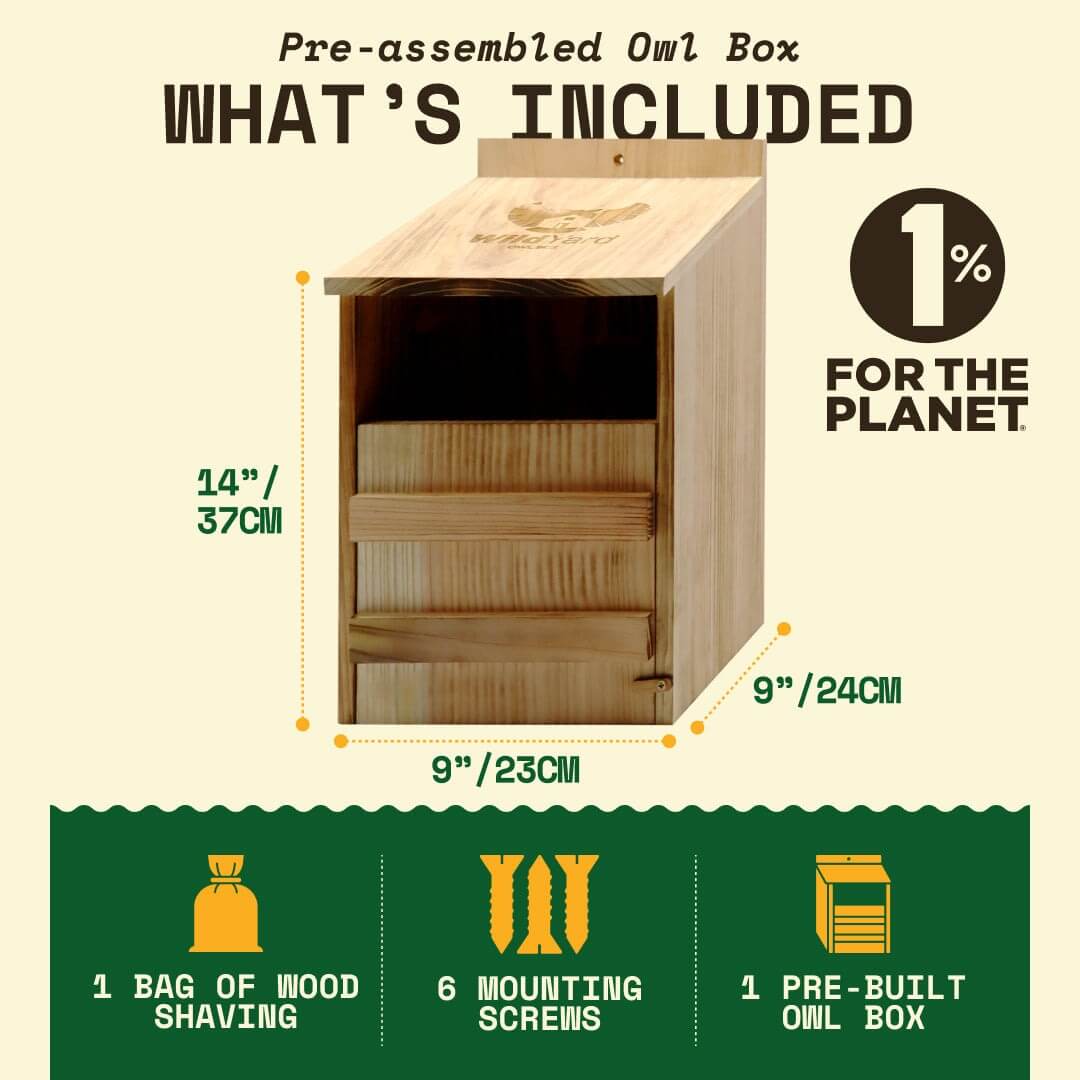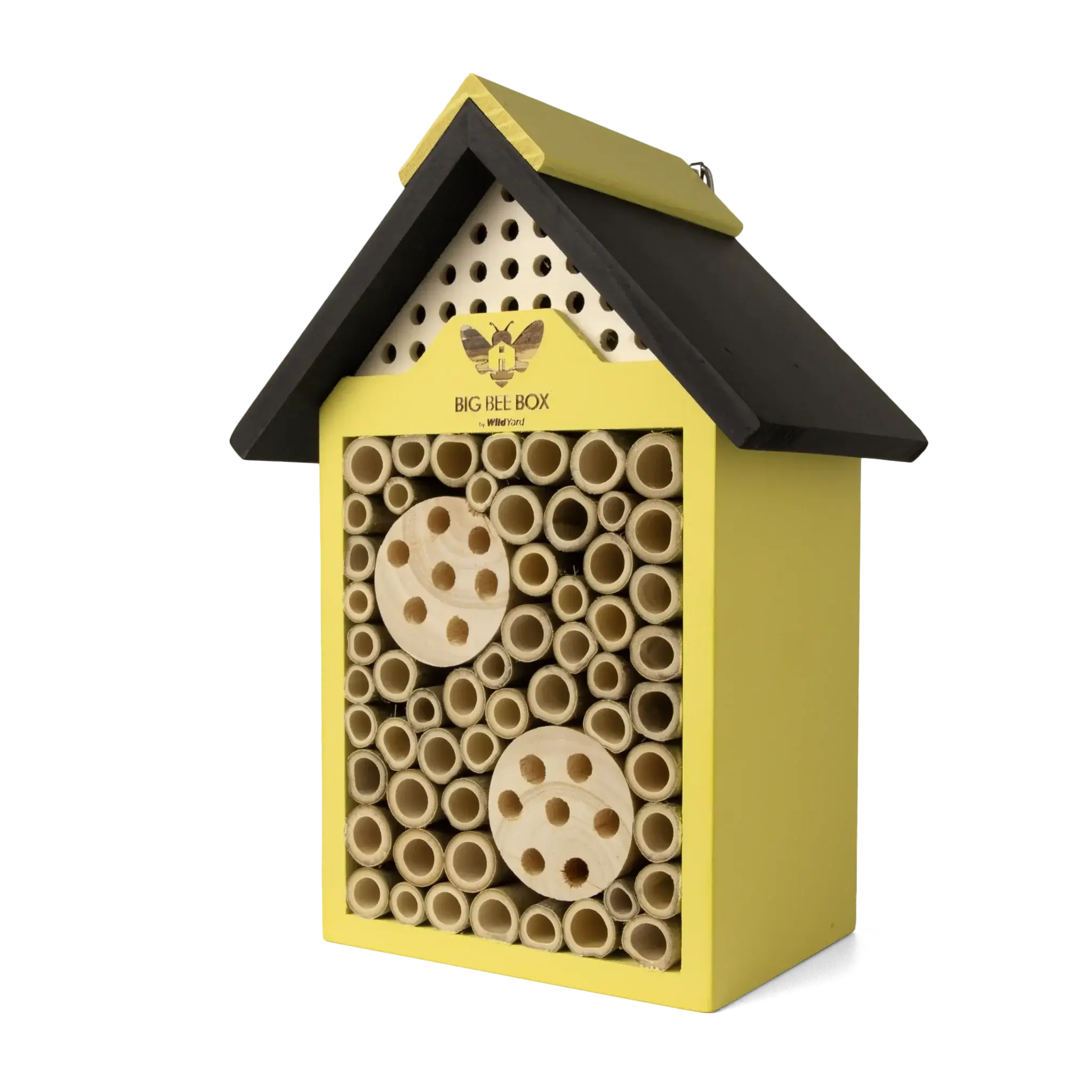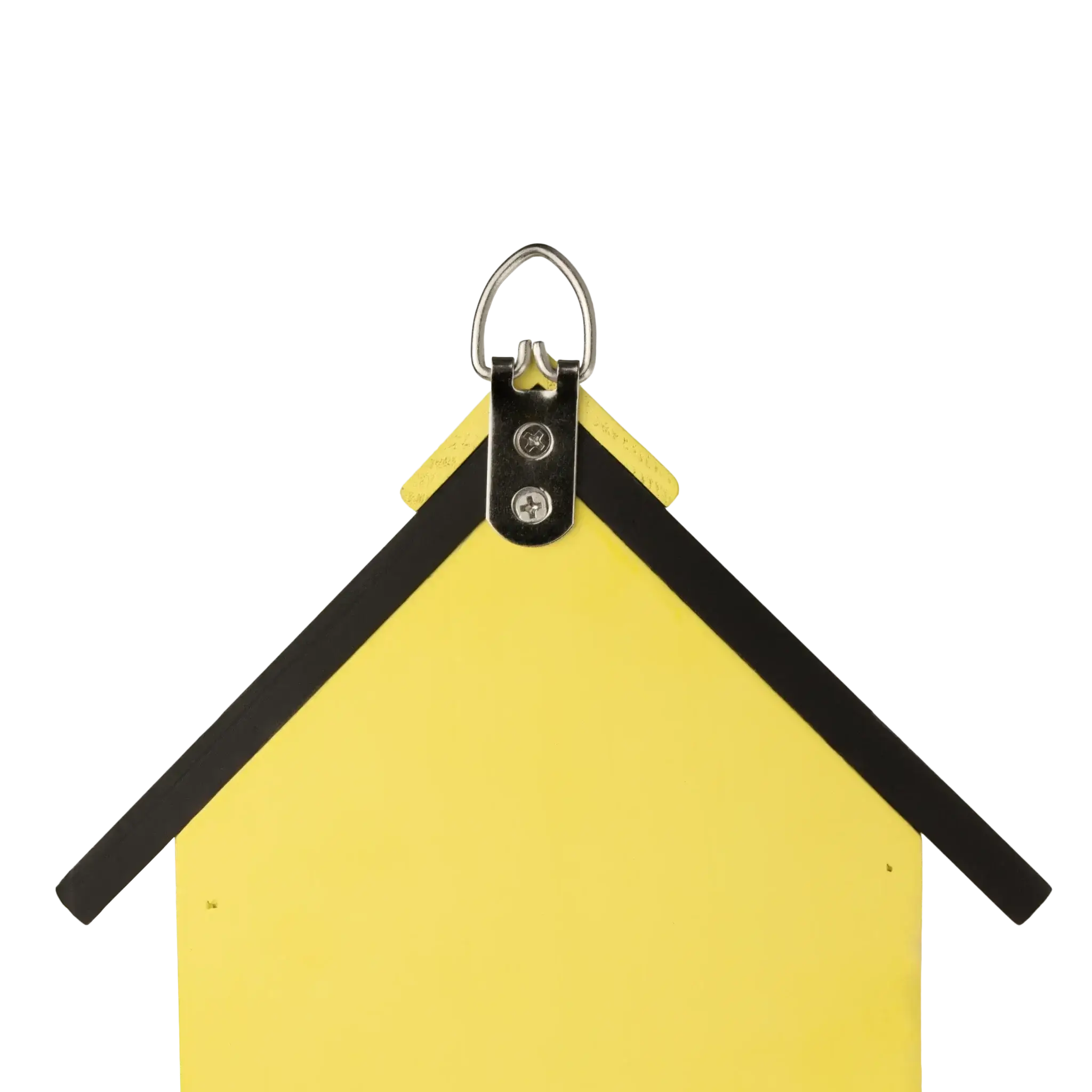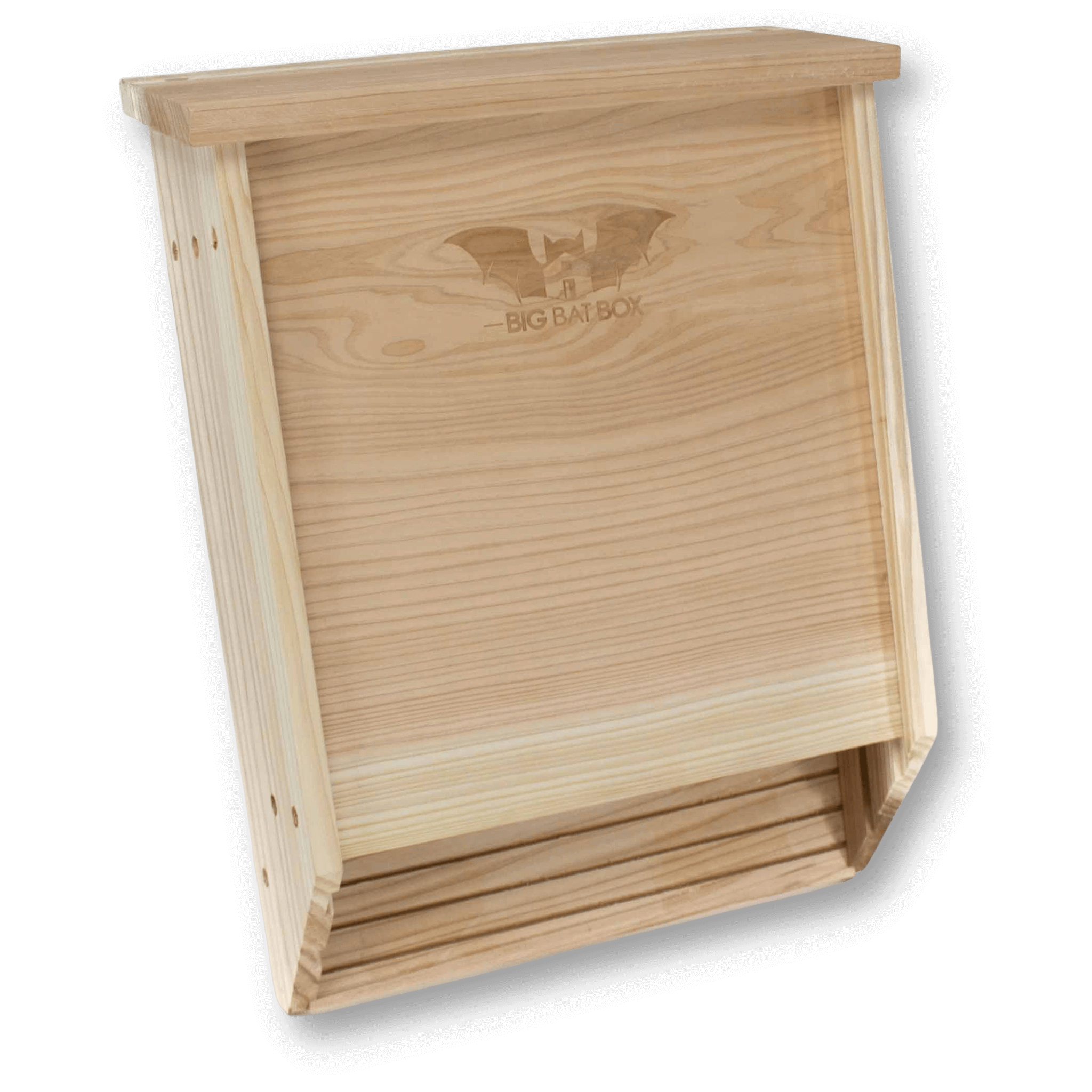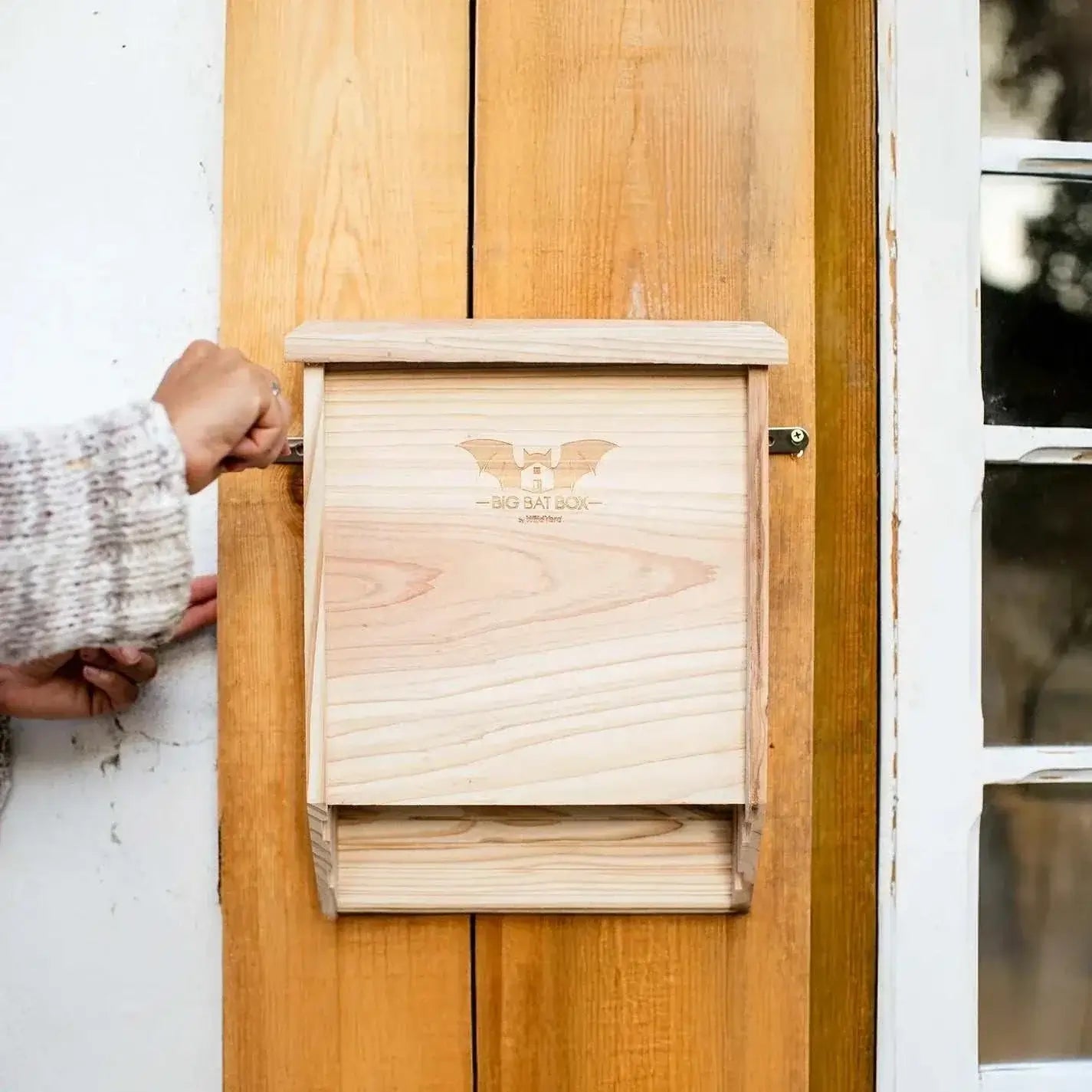Two-Chamber Bat House (Black)
Eco-Friendly Two-Chamber Black Bat House - Durable Cedar Shelter for Natural Pest Control
Support local wildlife and enjoy natural pest control with this eco-friendly two-chamber black bat house, made from durable cedar to house up to 75 bats. Its heat-retaining finish and ventilated design offer safe, chemical-free roosting in cooler climates.
The Two-Chamber Black Bat House is a perfect way to help nature and keep your yard free from insects. This strong and weather-safe bat barn gives bats a warm and safe home to rest. It is constructed of durable cedar wood and painted black to retain more heat, which makes it the choice of every colder locality and elevation.
This bat house has a capacity of 75 bats. The design with two chambers is another way that contributes to maintaining a stable temperature, which is extremely essential to young bats. The black color acts as a warm aspect to the inside, even when the night is cold. Each chamber has grooves that help bats grip easily and stay secure.
Installing this bat barn is simple and quick. It may be on either a wall, pole or side of a shed where there is good morning sunshine. The design is such that there is good air flow, and therefore the roost is dry and healthy. After finding a new home, the bats know how to give back to your garden, and you can say that they pest every night mosquitoes and small nuisances in your garden.
This is an eco-friendly bat barn that contributes towards bat conservation and provides these useful creatures with a safe habitat, as forests and caves are increasingly difficult to locate. With its inclusion in your yard, you will use fewer sprays and chemicals, and you will have a wildlife-friendly and sustainable garden.
The Two-Chamber Black Bat House was constructed year after year with its solid construction of cedar and clever design. It is natural and valuable in every garden, and you can appreciate its worth.
Contribute to nature with this black bat barn and have a wonderful day in peace and without mosquitoes, and contribute to the life and survival of local bats.
Info about the Bat boxes
Frequently Asked Questions
-
Size affects both capacity and climate control. A 2-chamber bat house can host around 50–75 bats and suits smaller yards or bachelor colonies. Larger 3- or 4-chamber bat houses can hold several hundred bats, including maternity groups, and they retain heat more evenly—important in regions with wide temperature swings.
Too small can limit success, but too big is rarely a problem. If you have space and sun exposure, choosing a larger house gives you the best long-term results.
-
The best bat house color depends on your local climate. Darker colors, like black or dark brown, absorb more heat and work well in cooler regions with mild summers. Medium shades, such as natural wood or mid-tone brown, suit temperate areas. Light colors, like cedar or tan, reflect sunlight and are best in hot climates where summers regularly exceed 95°F (35°C). The goal is to keep the bat house interior within the preferred range of 80–104°F (27–40°C).
For example in the US:- Darker boxes (black/dark brown): Northern states like Minnesota, Vermont, or Michigan.
- Medium brown boxes: Central states with moderate summers, such as Ohio, Pennsylvania, or Kansas.
- Light boxes (cedar/tan): Hot southern states like Texas, Florida, Arizona, or Georgia.
If you’re unsure, it’s usually better to go a bit darker, especially in areas with cooler nights.
- Darker boxes (black/dark brown): Northern states like Minnesota, Vermont, or Michigan.
-
- The best location for a bat box is 15–20 feet (4.5–6 meters) on a south or southeast-facing wall or pole. A building wall works especially well in colder or dry climates because it helps regulate interior temperatures.
- If you’re using a pole, consider mounting two bat houses back-to-back for better heat balance. Choose a sunny, open location that stays between 80–104°F / 25-40°C .
- Avoid shaded areas, dense woods, or monoculture farms—bats prefer open spaces near water sources or areas where they’ve previously roosted.
-
- It’s possible, but not recommended. Tree-mounted boxes are often too shady and leave bats vulnerable to predators like owls or raccoons.
- Research shows they take twice as long to attract residents compared to wall- or pole-mounted boxes. If no other option exists, use the sunniest, most open tree you have, and keep the bat house at least 20 feet (6 meters) above ground and away from branches.
-
The capacity depends on size and placement. A 2-chamber bat house may host 50–75 bats, while larger 3- or 4-chamber houses can support several hundred, including maternity colonies.
Since bats cluster for warmth, providing enough roosting space helps them thrive. If you’re unsure which size to pick, it’s generally better to go larger—too big is rarely a problem, while a box that’s too small can limit colony growth and reduce long-term success.
-
Some bat houses attract residents within a few weeks, but on average it takes 2–6 months. Larger houses can take up to two years to host a colony.
Location is key: place the box near water, in an open, sunny area, and at the correct height (15–20 feet / 4.5–6 meters). Bigger houses often fill more quickly once discovered, since they offer multiple roosting options. If in doubt, choosing a larger model improves your chances of attracting and retaining bats.
-
Yes—bats are highly effective insect predators. A single bat eats thousands of mosquitoes and crop pests each night, making them natural, chemical-free pest control. Unlike insecticides, which can harm pollinators and other wildlife, bats target insects while supporting biodiversity.
Installing a bat box reduces pests and helps conserve bat populations, many of which are at risk from habitat loss. Larger bat houses also encourage bigger colonies, which means more effective pest control for your property.

Installation Guide
You can download the installation guide by clicking the button below.























